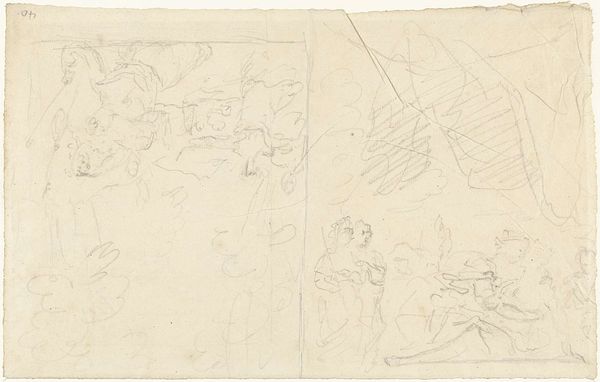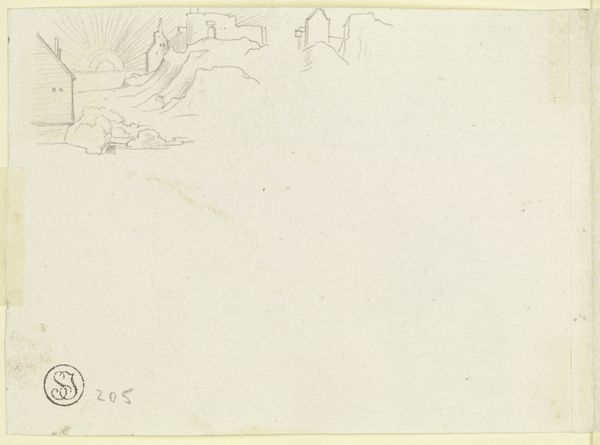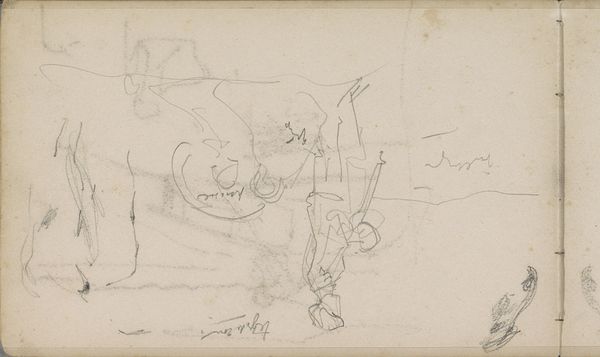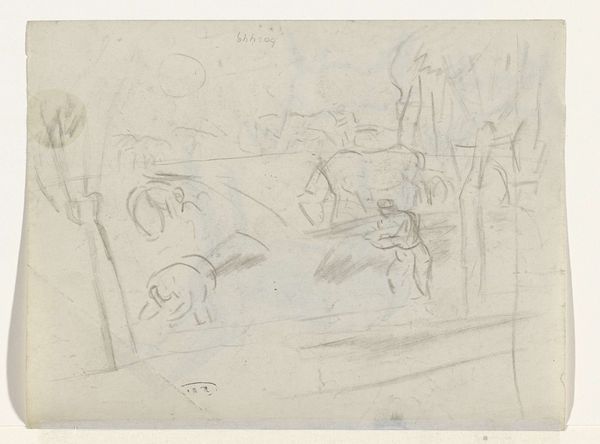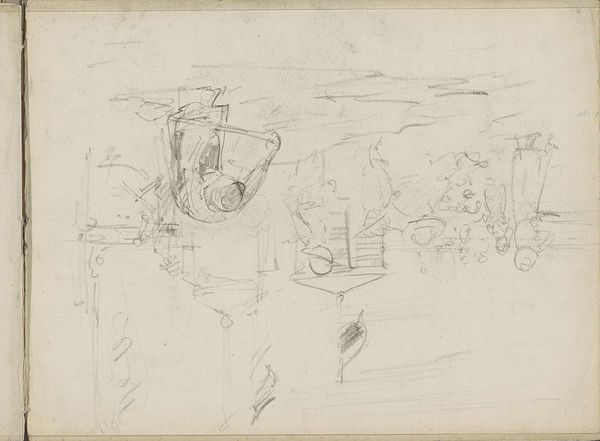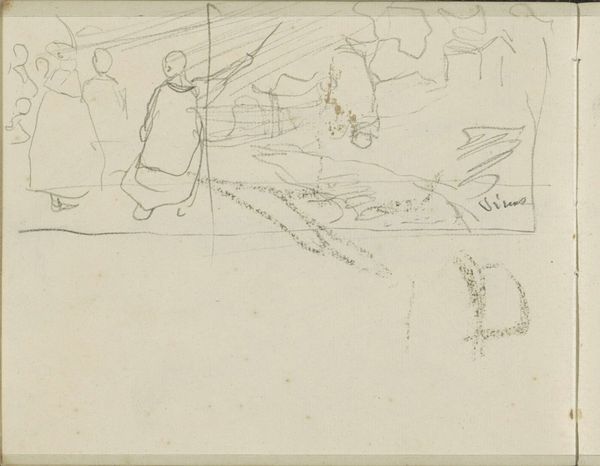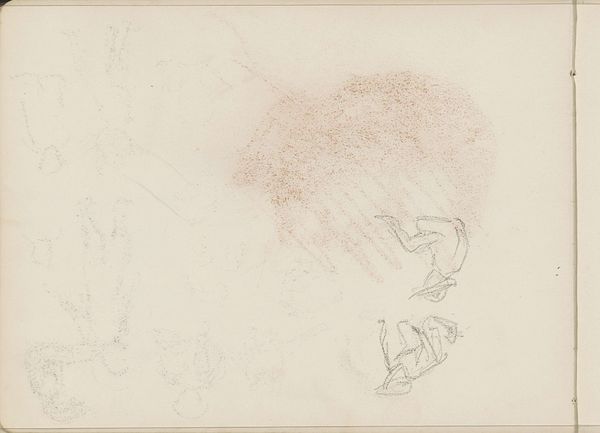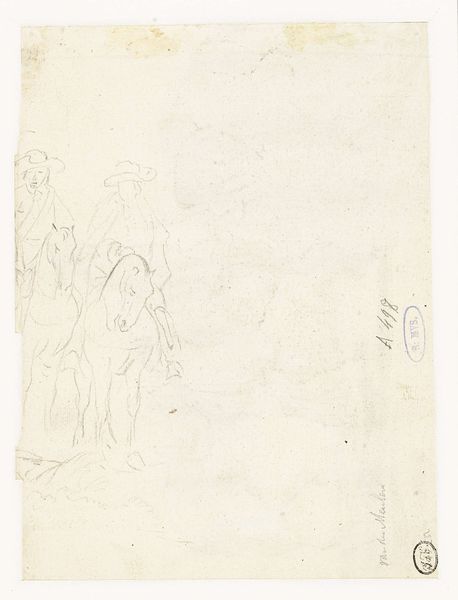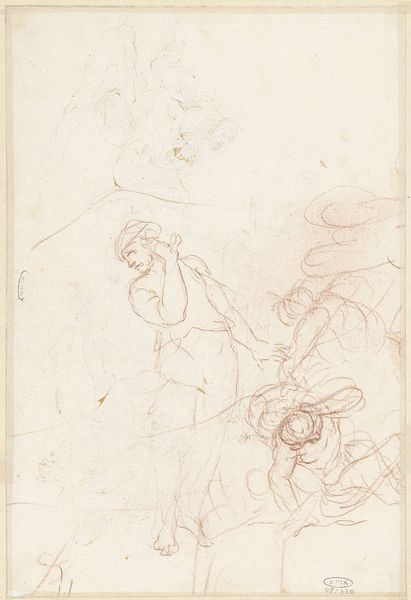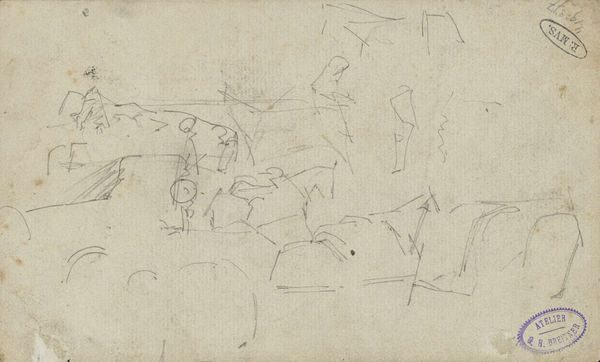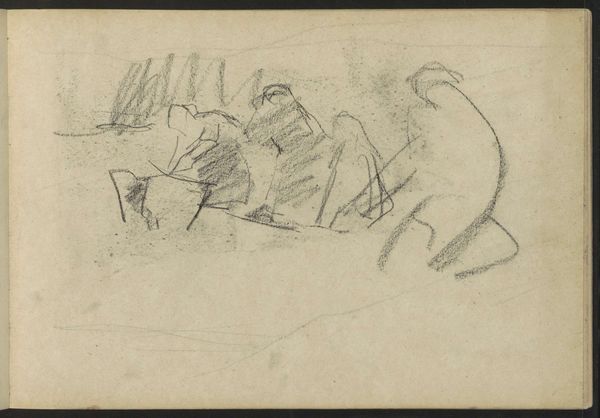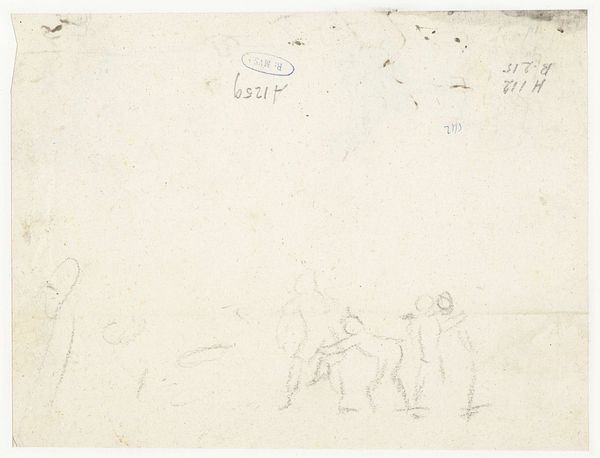
drawing, pencil
#
drawing
#
neoclassicism
#
landscape
#
figuration
#
pencil
Dimensions: height 205 mm, width 327 mm
Copyright: Rijks Museum: Open Domain
Curator: The "Sketch of Figures in a Landscape," attributed to Dionys van Nijmegen and dating between 1715 and 1798, is a neoclassical pencil drawing offering an intimate glimpse into the artist's creative process. What’s your initial take? Editor: It feels so delicate, almost ephemeral. The composition, despite its rough nature, hints at a grand scene, but the hazy pencil lines give it an unfinished quality. It’s like capturing a dream. Curator: Absolutely. It’s important to consider the period – neoclassicism sought to revive the aesthetics of antiquity. We can speculate that Nijmegen intended to evoke a specific narrative or allegory, particularly given the costumed figures, classical structure, and indication of landscape setting, hinting at social structure and perhaps even power dynamics within this depicted space. Editor: Agreed. But, formally speaking, the use of pencil allows us to focus on the architectural and figurative relationships. Look at the archway, how it frames the figures yet seems almost as light as the surrounding foliage. And how the costumes define the characters’ forms—the draping and gathering create strong visual rhythm. Curator: It is also of value to notice how the representation of these figures reflects back on how identities of class are rendered visible. The architecture seems deliberately positioned to present these individuals in a specific relationship to power, which further prompts critical reflections on issues of representation. How do we assess the figures when looking at them through contemporary eyes, for instance? Editor: Interesting point. But from my perspective, if we isolate form as communication, these details don't hinder—they add levels of nuance, like musical ornamentation, but that's separate from its impact. Curator: True. However, detaching the visual expression from the social context negates the capacity for true communication. We have to analyze art in all its intricacies so that people see art’s vital connection with the past and the present. Editor: Well, I do concede that this method might serve best as a gateway to understanding, that in and of itself, is what it might really aim for, rather than trying to encapsulate all potential meanings.
Comments
No comments
Be the first to comment and join the conversation on the ultimate creative platform.
